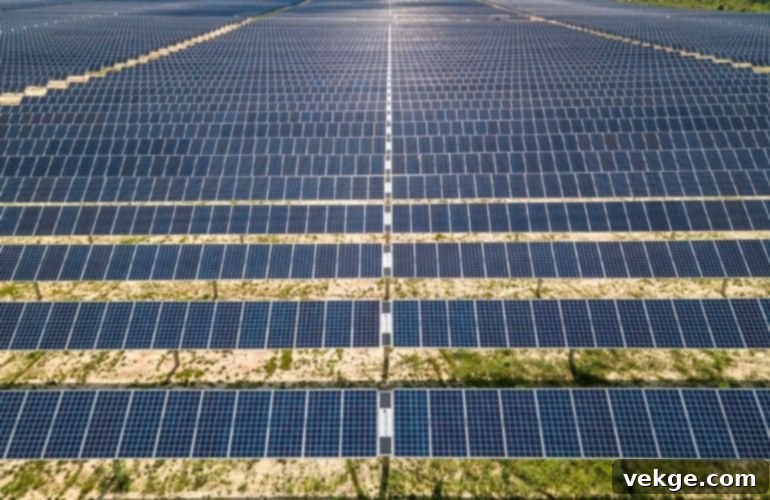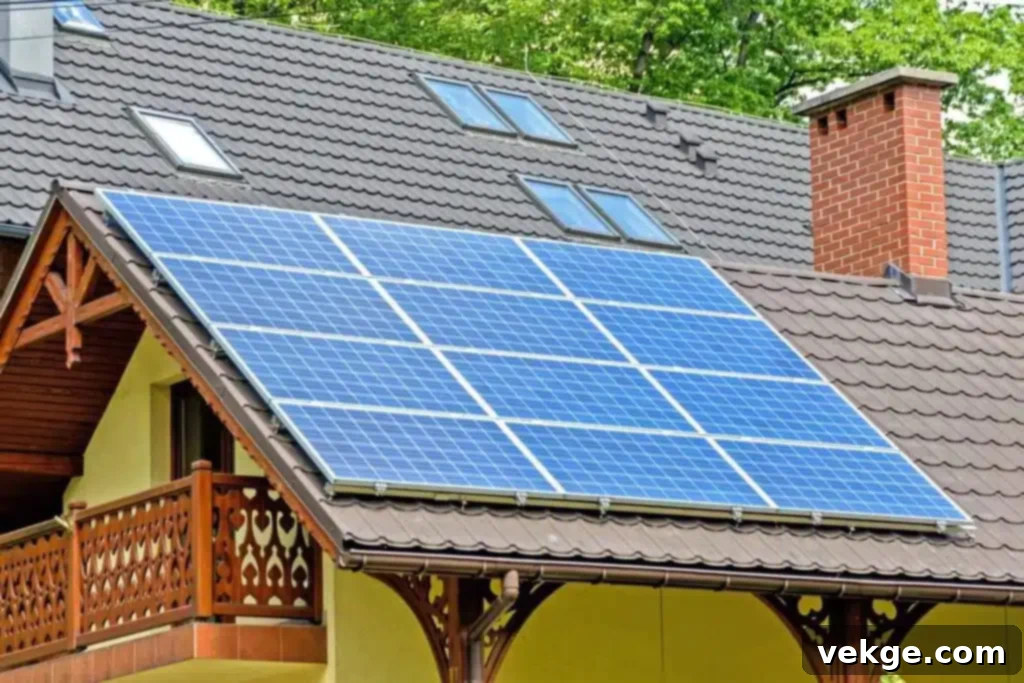Harnessing the Sun: 6 Brilliant Ways to Transform Your Home with Solar Energy
The sun, that magnificent fiery orb in our sky, is far more than just a source of warmth and light. It’s an immense, untapped reservoir of clean, renewable energy, offering a sustainable path towards powering our homes and lives. As global consciousness shifts towards environmental stewardship and the urgent need for a greener planet, integrating solar energy into our residential spaces is not merely a smart choice; it’s a vital commitment to a sustainable future.
Embracing solar power means taking an active step towards energy independence, significantly reducing your carbon footprint, and often, enjoying substantial financial savings. This transition aligns your home with eco-friendly principles, making it a testament to innovation and responsible living. Here are six brilliant, practical, and increasingly accessible ways to make the sun work diligently for you, transforming your living space into a beacon of sustainability and modern efficiency.
1. Solar Panels: The Classic Game Changer for Renewable Energy

Let’s begin with the most well-known and revolutionary application: solar panels. Gone are the days of bulky, obtrusive installations. Modern solar panels in the UK (and globally) are sleek, highly efficient, and designed to integrate seamlessly with your roofline, often enhancing a home’s aesthetic appeal. These photovoltaic (PV) systems act as silent, diligent workers, converting sunlight directly into electricity that powers your home, all while you carry on with your daily activities.
The primary allure of solar panels lies in their long-term economic benefits. While the initial setup cost is an investment, it’s one that consistently pays dividends. Once installed, your reliance on grid electricity diminishes, and with it, your monthly electricity bills often plummet, or are even eliminated. Many homeowners find themselves generating surplus electricity, which can then be sold back to the national grid through schemes like net metering or feed-in tariffs, essentially turning your roof into a revenue-generating asset. Furthermore, governments worldwide offer attractive incentives for solar panel installation, including grants, tax credits, and rebates, making this powerful sustainable option increasingly accessible and kinder to your wallet. With advancements in battery storage technology, you can now store excess solar energy for use during the night or on cloudy days, further increasing your energy independence and resilience.
2. Solar Water Heating: Turn Up the Heat, Economically and Sustainably
Imagine the luxury of a soothing, hot shower after a long day, knowing that the warmth was provided entirely by the sun. Solar water heaters make this a daily reality. These systems utilize solar thermal collectors, typically installed on your roof, to absorb sunlight and convert it into heat. This heat is then transferred to a fluid (often water or an antifreeze solution) which circulates through a heat exchanger, warming the water stored in an insulated tank. The process is remarkably efficient, incredibly cost-effective, and dramatically reduces your home’s carbon footprint.
Whether it’s for washing dishes, doing laundry, or indulging in a relaxing bath, solar water heating is an excellent and practical step towards a truly sustainable lifestyle. There are two main types: active systems, which use pumps to circulate the fluid, and passive systems, which rely on natural convection. Both offer substantial savings on energy bills compared to conventional electric or gas water heaters. By harnessing the sun’s abundant energy for a fundamental household need, you not only reduce operational costs but also contribute significantly to environmental protection, securing a consistent supply of hot water for your home.
3. Solar Lighting: Brighten Your Home, Naturally and Efficiently

Solar lighting offers an incredibly eco-friendly, efficient, and increasingly popular solution for illuminating both indoor and outdoor spaces, all while significantly cutting down on electricity costs and your carbon footprint. These innovative lights typically feature a small photovoltaic panel that absorbs sunlight during the day, charging a built-in rechargeable battery. As dusk falls, a light sensor automatically activates the LED bulb, providing hours of illumination without consuming any grid electricity. Here are some compelling examples of solar lighting that you might consider incorporating into your home or outdoor areas:
- Path Lights: Guide visitors safely along walkways and driveways while adding a charming ambiance to your landscape.
- Deck Lights: Enhance the safety and beauty of your outdoor living spaces, perfect for entertaining or relaxing evenings.
- String Lights: Create a festive and inviting atmosphere for patios, pergolas, or garden parties, offering a touch of magic without cords.
- Floodlights: Provide powerful, broad illumination for security purposes or to highlight architectural features and expansive garden areas.
- Lanterns: Versatile and portable, solar lanterns are perfect for adding decorative flair to tables, hanging from trees, or providing light during camping trips.
- Solar-Powered Motion Sensor Lights: An excellent security feature, these lights automatically switch on when motion is detected, deterring intruders and illuminating dark areas on demand.
- Post Cap Lights: Designed to fit atop fence posts or deck railings, these lights add a refined touch and subtle illumination to your outdoor perimeter.
- Indoor Solar Lights: While less common, these exist as small, portable lamps or even integrated skylight systems that bring natural light into darker rooms while charging internal batteries for night-time use.
- Garden Spotlights: Ideal for accentuating specific plants, sculptures, or water features in your garden, creating stunning visual effects at night.
Solar lighting is an easy, attractive, and highly effective way to make your home more energy-efficient, enhance its curb appeal, and improve safety, all powered by the sun.
4. Solar Charging Stations: Power Up Your Devices with the Sun
In our hyper-connected, tech-driven world, keeping our smartphones, tablets, and laptops charged is a constant necessity. Enter solar charging stations – a nifty and increasingly powerful solution to this modern challenge. These innovative devices harness sunlight to replenish the batteries of your electronic gadgets, offering unparalleled convenience and energy independence. Whether it’s a small, portable panel designed for your smartphone or a more robust station capable of charging a laptop or powering multiple devices simultaneously, solar chargers come in various sizes and capacities to suit different needs.
Simply place a solar charging station on a windowsill, outdoor table, or even attach a portable unit to your backpack, and let the sun diligently take care of your battery levels. This small step has a significant impact, reducing your reliance on traditional grid electricity and providing a reliable power source during power outages, camping trips, or remote excursions. Modern solar charging stations are efficient, compact, and often include built-in power banks, allowing you to store solar energy for use after sunset. It’s an empowering technology that brings sustainable power directly to your fingertips, ensuring you stay connected and productive wherever you are.
5. Solar Cooking: A Delicious Twist on Meal Preparation

Unleash your inner outdoor chef and embark on a culinary adventure with solar cookers – a fascinating and eco-friendly way to prepare your meals. These ingenious devices use reflective materials (like polished aluminum or Mylar) to concentrate sunlight onto a cooking vessel, generating temperatures hot enough to bake, boil, or stew food, all without requiring any electricity, gas, or firewood. There are various types, from simple box cookers ideal for slow baking, to panel cookers offering portability, and high-performance parabolic cookers that can reach oven-like temperatures quickly, enabling faster cooking.
While often a slower cooking process than conventional methods, the results are often incredibly flavorful, as the gentle, even heat tenderizes food beautifully and helps retain nutrients. Solar cooking offers numerous advantages: it eliminates fuel costs, produces no harmful emissions, reduces fire hazards, and provides a sustainable solution for meal preparation, especially during outdoor gatherings, emergencies, or in regions with limited access to conventional fuels. Whether you’re baking fresh bread, simmering a hearty stew, or boiling water, solar cooking adds a unique dash of adventure to your culinary exploits and deepens your understanding of sustainable energy. It’s an exciting way to engage with your food and the natural environment.
6. Passive Solar Design: Smart Building for the Future
If you’re embarking on the journey of building a new home or undertaking a significant remodeling project, consider the profound benefits of passive solar design. This approach isn’t merely about installing technology; it’s about an intelligent architectural strategy that makes your home work harmoniously with its natural environment. Passive solar design principles focus on harnessing the sun’s energy for heating and cooling without the use of mechanical systems, relying instead on strategic placement, material choices, and thoughtful integration with the local climate.
The core concept involves five key elements: an **aperture** (south-facing windows to let in sunlight), an **absorber** (dark, heat-absorbing surfaces behind the apertures), **thermal mass** (materials like concrete, stone, or water that store heat), **distribution** (how heat moves through the house, typically by natural convection), and **control** (elements like overhangs, awnings, or blinds to manage heat gain and loss). By strategically orienting your home, sizing windows correctly, and selecting materials that absorb and slowly release solar heat, you can keep your home comfortably warm in the winter and refreshingly cool in the summer. This holistic approach considers the sun’s path throughout the year, wind patterns, and local climate conditions, resulting in a home that is naturally comfortable, bathed in abundant natural light, and exceptionally energy-efficient, significantly reducing the need for artificial heating and air conditioning.
Conclusion: Embracing a Brighter, Greener Future with Solar Energy
Incorporating solar energy into your home is far more than just a means of cutting down on utility bills or adhering to the latest environmental trend. It represents a profound commitment to living more harmoniously with our planet, taking tangible steps towards reducing our collective carbon footprint, and embracing innovative technologies that yield benefits for both current and future generations. From the substantial savings offered by solar panels and water heaters to the convenience of solar lighting and charging, and the ingenuity of solar cooking and passive design, the sun offers a diverse array of solutions for a sustainable lifestyle.
Each step taken towards solar adoption, no matter how small, is a meaningful stride towards a brighter, cleaner, and more energy-independent future. Investing in solar solutions for your home enhances its value, reduces your environmental impact, and provides a greater sense of security and self-reliance. As technology continues to advance, solar energy will only become more efficient, affordable, and integrated into our daily lives. So, why not embrace this powerful, natural resource and let the sun illuminate and power your home?
